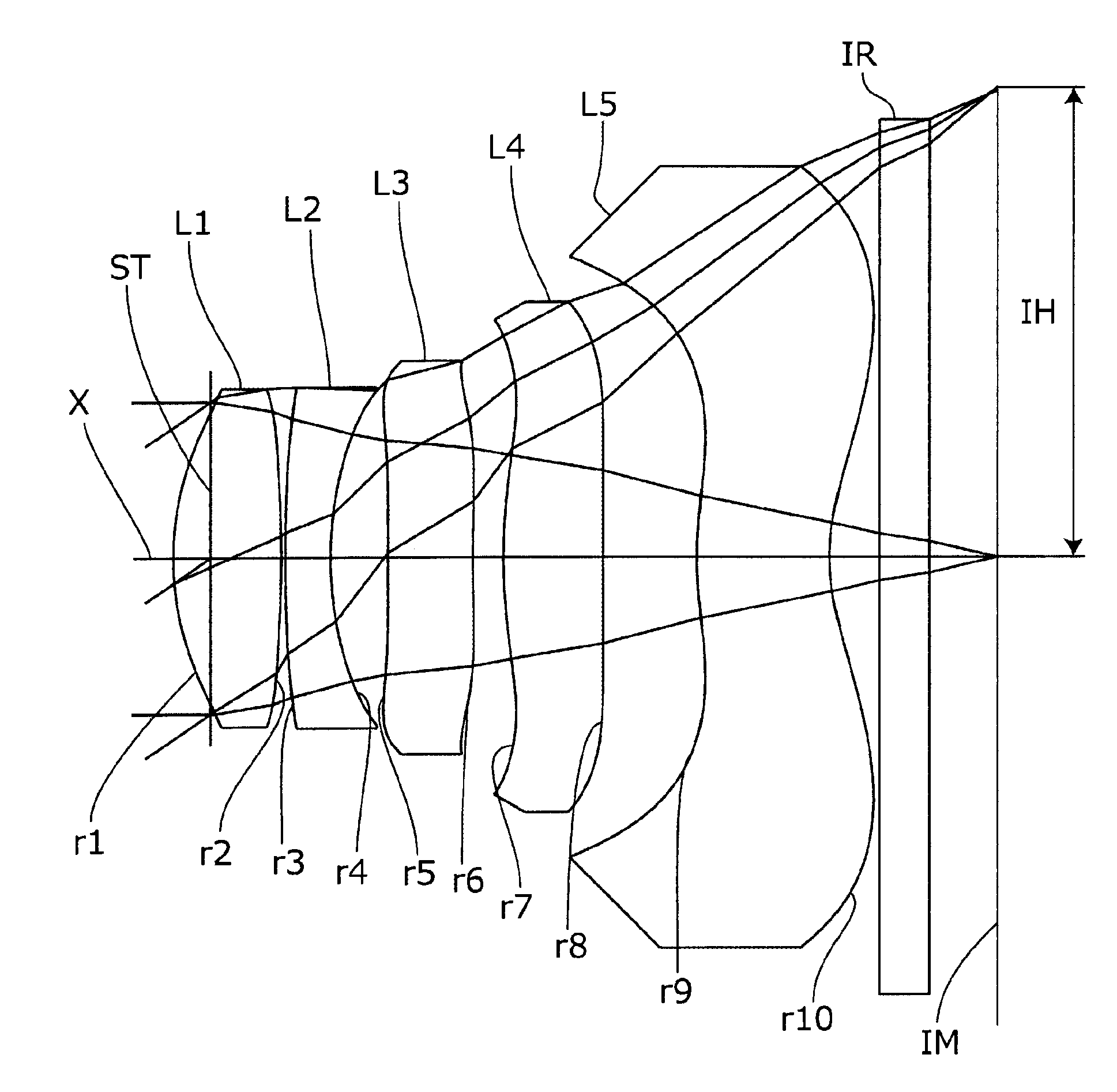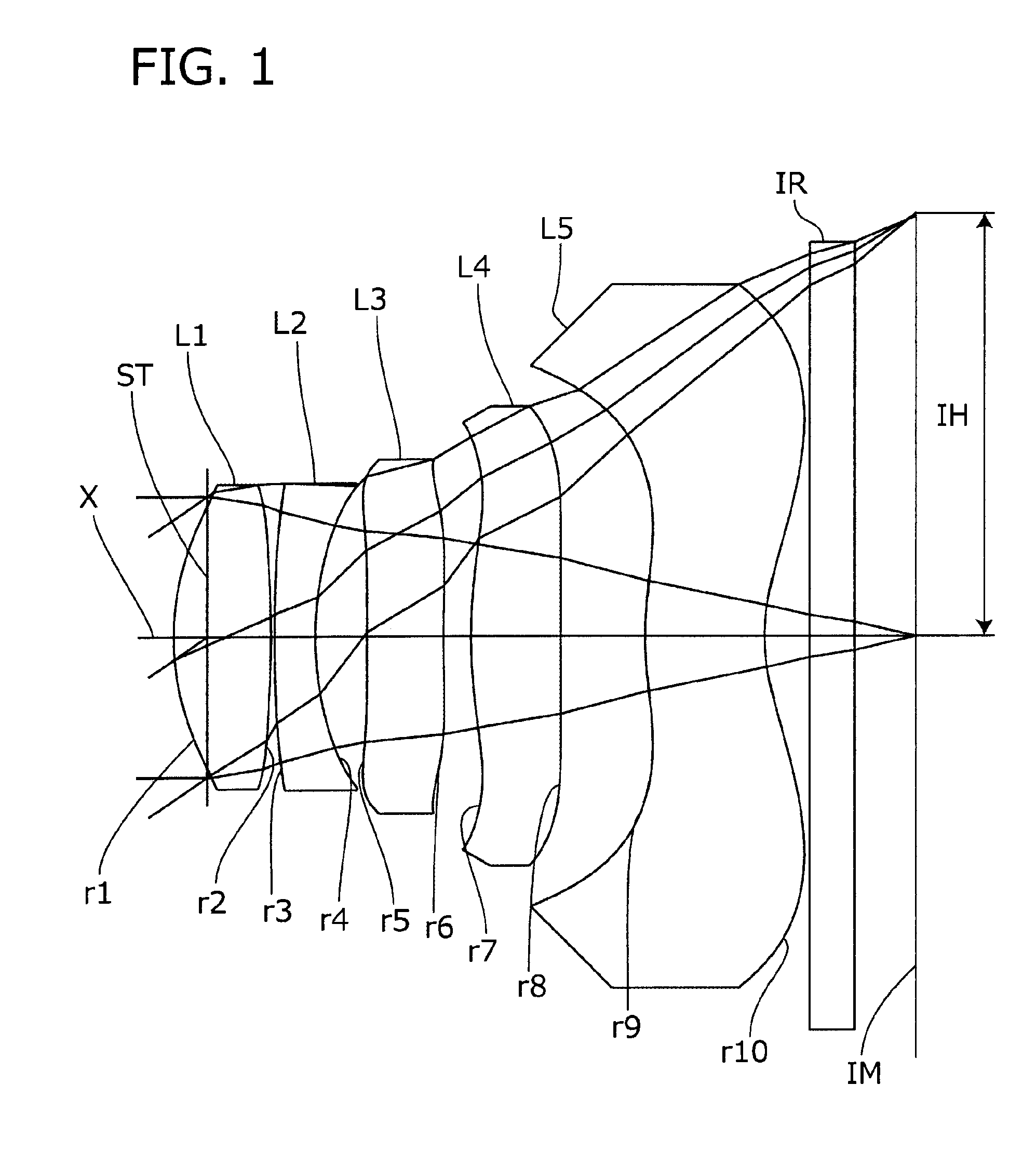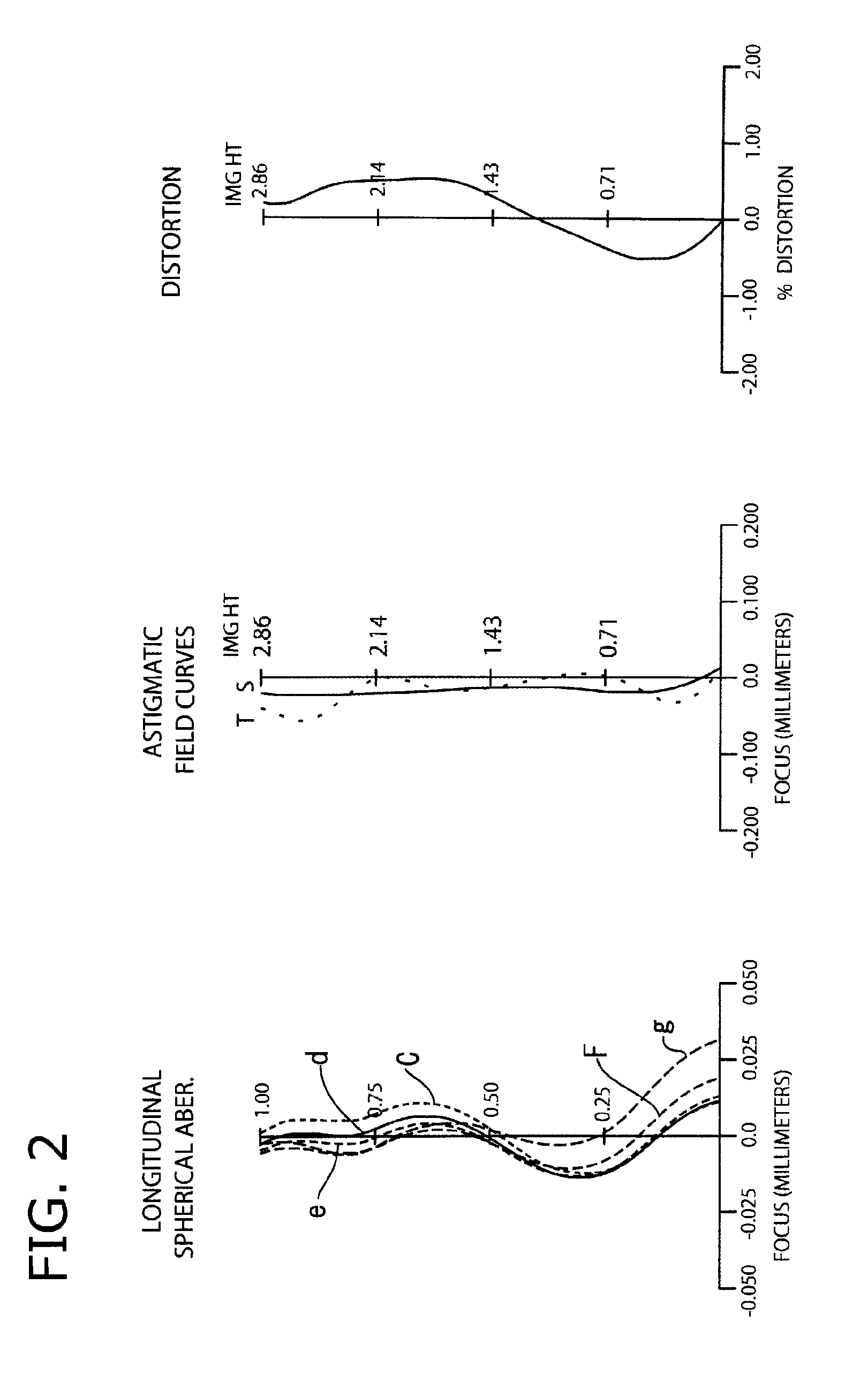Imaging lens
a technology of imaging lenses and occlusion, applied in the field of imaging lenses, can solve the problems of weak power of the first lens, disadvantageous in order to achieve thinness, and insufficient brightness of the imaging lens, so as to shorten the total track length, and achieve mass production
- Summary
- Abstract
- Description
- Claims
- Application Information
AI Technical Summary
Benefits of technology
Problems solved by technology
Method used
Image
Examples
embodiment 1
[0053]Next, the preferred embodiments of the present invention will be described in detail referring to the accompanying drawings. FIGS. 1, 3, 5, and 7 are views showing the general configurations of imaging lenses according to Embodiments 1 to 4 of the present invention respectively. Since all these Embodiments have the same basic lens configuration, the lens configuration of an imaging lens according to the present invention is explained below referring to the view of the
[0054]As shown in FIG. 1, in the imaging lens according to the present embodiment, lenses are arranged in the following order from the object side to the image side: a first lens L1 with positive refractive power, a second lens L2 with negative refractive power, a third lens L3 with positive or negative refractive power, a fourth lens L4 with positive refractive power, and a fifth lens L5 with negative refractive power. Aperture stop ST is located on the object side of the first lens L1. Filter IR is located betwe...
embodiment 2
[0080
[0081]The basic lens data of the Embodiment 2 is shown below in Table 2.
[0082]
TABLE 2Unit mmf = 4.159Fno = 2.20ω(°) = 34.50IH = 2.856Surface dataSurfaceCurvatureSurfaceRefractiveAbbe No.No. iradius rdistance dindex Ndνd(Object surface)InfinityInfinityStopInfinity−0.2251*1.8740.5841.53556.162*−21.9650.1003*33.4380.2601.63523.914*2.3430.2385*3.8660.6101.53556.166*11.0670.3867*4.1330.5051.53556.168*41.2700.4609*2.3150.7231.53556.1610* 1.2610.411 Infinity0.31.51764.2012 Infinity0.486Image planeInfinitySingle lens dataLensStart planeFocal length113.24423−3.9393510.749478.51559−6.788Aspheric dataFirstSecondThirdFourthFifthsurfacesurfacesurfacesurfacesurfacek−1.886E+004.388E+023.059E−02−1.458E+00 0.000E+00A4 3.969E−021.085E−013.059E−02−1.085E−01 −1.362E−01A6−2.319E−02−1.011E−01 3.157E−022.070E−01 3.780E−02A8 5.384E−022.255E−02−1.821E−01 −3.220E−01 4.319E−03A10−4.879E−02−1.427E−02 1.166E−012.360E−01−2.479E−02A12 3.911E−03−2.987E−03 −1.491E−02 −5.626E−02 6.121E−02A14 5.711E−034.239E−...
embodiment 3
[0086
[0087]The basic lens data of the Embodiment 3 is shown below in Table 3.
[0088]
TABLE 3Unit mmf = 4.142Fno = 2.20ω(°) = 34.75IH = 2.856Surface dataSurfaceCurvatureSurfaceRefractiveAbbe No.No. iradius rdistance dindex Ndνd(Object surface)InfinityInfinityStopInfinity−0.2001*1.8720.5911.53556.162*−5.5480.0473*6.3550.2761.63523.914*1.7100.4585*8.5000.3921.53556.166*9.6000.3387*7.5280.5231.53556.168*736.7530.2489*1.9730.8481.53556.1610* 1.5090.411 Infinity0.31.51764.2012 Infinity0.600Image planeInfinitySingle lens dataLensStart planeFocal length112.68223−3.73335122.8794714.16459−33.034Aspheric dataFirstSecondThirdFourthFifthsurfacesurfacesurfacesurfacesurfacek−2.217E+00 0.000E+000.000E+00−9.585E−01 0.000E+00A43.626E−021.141E−012.186E−02−9.693E−02 −1.324E−01 A6−2.837E−02 −1.313E−01 5.007E−022.423E−015.992E−02A83.465E−024.347E−02−1.746E−01 −3.158E−01 3.496E−03A10−3.540E−02 −1.263E−02 1.461E−012.226E−01−3.148E−02 A120.000E+000.000E+00−3.230E−02 −5.368E−02 5.376E−02A140.000E+000.000E+000....
PUM
 Login to View More
Login to View More Abstract
Description
Claims
Application Information
 Login to View More
Login to View More - R&D
- Intellectual Property
- Life Sciences
- Materials
- Tech Scout
- Unparalleled Data Quality
- Higher Quality Content
- 60% Fewer Hallucinations
Browse by: Latest US Patents, China's latest patents, Technical Efficacy Thesaurus, Application Domain, Technology Topic, Popular Technical Reports.
© 2025 PatSnap. All rights reserved.Legal|Privacy policy|Modern Slavery Act Transparency Statement|Sitemap|About US| Contact US: help@patsnap.com



